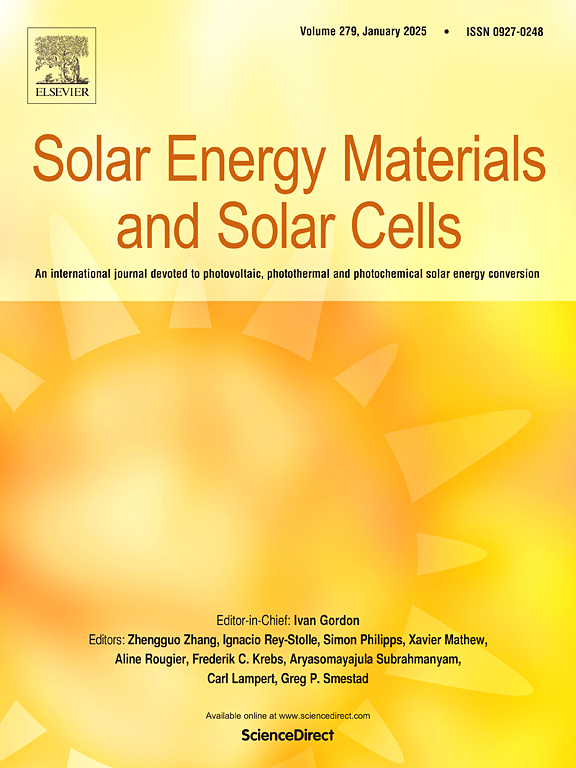IF 6.3
2区 材料科学
Q2 ENERGY & FUELS
引用次数: 0
摘要
隧道氧化物钝化接触(TOPCon)技术是当今最具影响力和工业可行性的太阳能电池技术之一。其优异的钝化接触性能已成为当前研究的热点。然而,多晶硅薄膜存在较为严重的寄生吸收现象,如何平衡多晶硅厚度以解决多晶硅与金属化接触的吸收系数问题值得进一步研究和探讨。为解决这一问题,利用激光以图形方式制备了多晶硅,并通过激光产生的热量形成了多晶硅指状 TOPCon 电池结构。扫描电子显微镜(SEM)、电化学伏安法(ECV)和光谱椭偏仪(SE)等多种表征技术证实了该结构的有效性。主要结果表明,多晶硅指状结构有效降低了多晶硅的寄生吸收损耗,提高了电池的电流密度,并保持了与金属接触同等的钝化性能。因此,与基线组相比,最终生产阶段的平均转换效率提高了 0.33%。这项研究通过强调寄生吸收损耗和电池整体性能的显著改善,强调了这种多晶硅指状结构在推动高效太阳能电池制造方面的潜力。本文章由计算机程序翻译,如有差异,请以英文原文为准。
Enhancing passivation and reducing absorption losses in TOPCon solar cells via Poly-Si finger structure
Tunnel Oxide Passivated Contact (TOPCon) technology is one of the most influential and industrially feasible solar cell technologies today. Its excellent passivation contact performance has become a hot spot of current research. However, more serious parasitic absorption exists in polysilicon films, and balancing the thickness of polysilicon to solve the absorption coefficient of poly-Si with metallization contact is worthy of further research and discussion. To solve this problem, poly-Si was prepared graphically using laser, and the poly-Si finger TOPCon cell structure was formed by the heat generated by the laser. Various characterization techniques such as scanning electron microscopy (SEM), electrochemical voltammetry (ECV) and spectroscopic ellipsometry (SE) confirmed the validity of the structure. The main results show that the poly-Si finger structure effectively reduces the parasitic absorption loss of polysilicon, improves the current density of the cell and maintains the passivation performance on par with the metal contact. As a result, the average conversion efficiency in the final production stage increased by 0.33 % compared to the baseline set. This study emphasizes the potential of this poly-Si finger structure to drive the fabrication of highly efficient solar cells by emphasizing significant improvements in parasitic absorption losses and overall cell performance.
求助全文
通过发布文献求助,成功后即可免费获取论文全文。
去求助
来源期刊

Solar Energy Materials and Solar Cells
工程技术-材料科学:综合
CiteScore
12.60
自引率
11.60%
发文量
513
审稿时长
47 days
期刊介绍:
Solar Energy Materials & Solar Cells is intended as a vehicle for the dissemination of research results on materials science and technology related to photovoltaic, photothermal and photoelectrochemical solar energy conversion. Materials science is taken in the broadest possible sense and encompasses physics, chemistry, optics, materials fabrication and analysis for all types of materials.
 求助内容:
求助内容: 应助结果提醒方式:
应助结果提醒方式:


